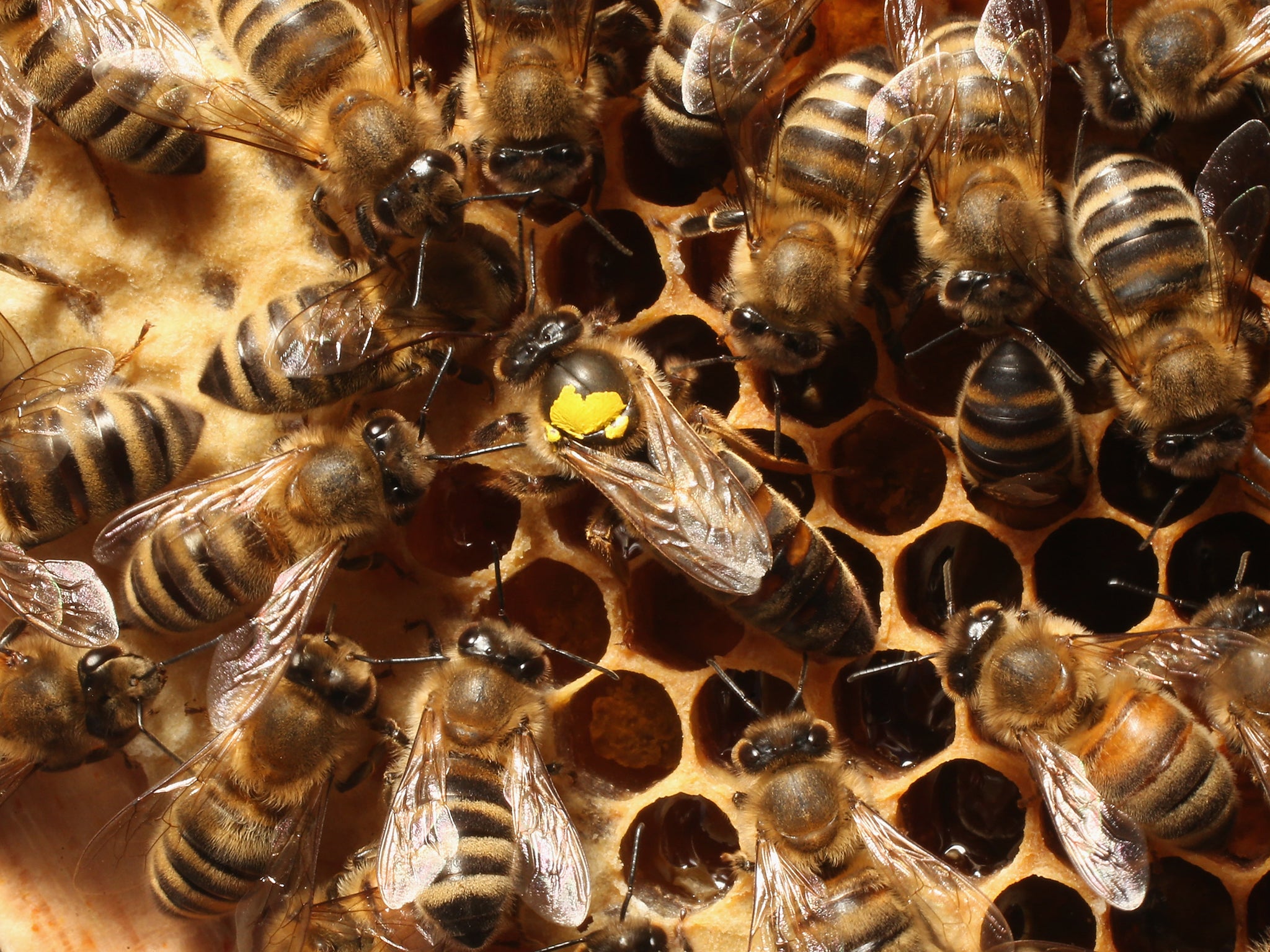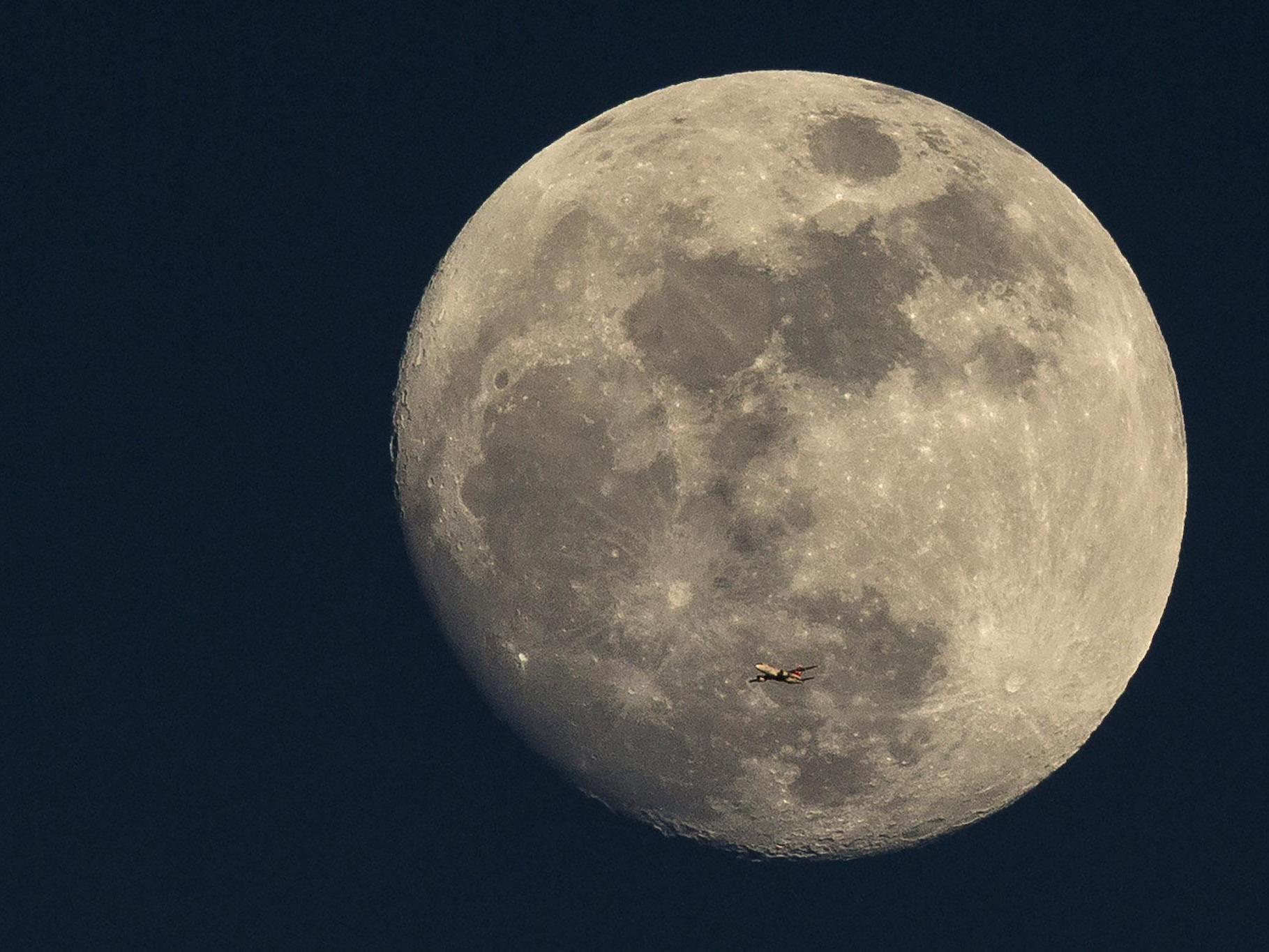Science news in brief: From bee psychology to the strange aromas of dark chocolate
And other news from around the world

Your support helps us to tell the story
From reproductive rights to climate change to Big Tech, The Independent is on the ground when the story is developing. Whether it's investigating the financials of Elon Musk's pro-Trump PAC or producing our latest documentary, 'The A Word', which shines a light on the American women fighting for reproductive rights, we know how important it is to parse out the facts from the messaging.
At such a critical moment in US history, we need reporters on the ground. Your donation allows us to keep sending journalists to speak to both sides of the story.
The Independent is trusted by Americans across the entire political spectrum. And unlike many other quality news outlets, we choose not to lock Americans out of our reporting and analysis with paywalls. We believe quality journalism should be available to everyone, paid for by those who can afford it.
Your support makes all the difference.Striking down the queen won’t save you from the swarm
If you’ve watched any science fiction or fantasy movies in the last few decades, you’ve probably seen the following scenario play out enough times that the next paragraph shouldn’t count as a spoiler. An endless horde overwhelms our heroes. Defeat looks inevitable. But wait! There’s a central “hive queen” pulling the puppet strings, and if the good guys can just disable that boss, the evil army will collapse. “My guess is they do this because they need to figure out a way for the heroes to save the day,” says Simon Garnier, the head of the Swarm Lab at the New Jersey Institute of Technology. But this trope is based on a long-debunked idea that undersells how unusual and interesting real swarms are. Let’s say you come at the king and don’t miss. Even so, the swarm should still keep coming. This “hive mind” concept has floated around in science fiction since the 1930s. But it has clear roots in biology. Entomologists have long grappled with how insects such as bees, ants, termites and wasps achieve eerie feats of coordination. Until just recently, some experts believed these societies were strict hierarchies.
Today, researchers believe the truth is even stranger than science fiction. No individual ant or bee has the neural power to process a whole colony’s information and issue marching orders. Instead, individuals follow basic rules for how they interact with other swarm members. Coordinated problem-solving emerges from those rules, even with nobody at the helm. That same decentralisation makes swarms durable because they have no single point of failure. Insect queens are more like reproductive organs for their colonies. “The colony is not just dropping dead just because you remove the queen,” Garnier says. Some colonies might slowly peter out after losing one, he says, but many species will simply promote a new queen.

Bedbugs were menaces in the dinosaur age before visiting our mattresses
Most people hope never to lay eyes on a bedbug. But one team of researchers spent 15 years scouring guano-filled caves, cliffside nests and museum archives for bedbug specimens that might clarify the murky natural history of this globally loathed parasite. The team’s findings, published on Thursday in Current Biology, confirmed that bedbugs originated at least 100 million years ago, when dinosaurs roamed Earth. The discovery upends the established timeline of bedbug evolution, and could help to anticipate the pest’s next moves in an era of climate change and expansive human activity. The research team also found that the main varieties of bedbugs linked to humans evolved some 47 million years ago. Because they are tens of millions of years older than humans, their origins must not be linked to the emergence of Homo sapiens, as past studies have suggested. To reconstruct the complex evolutionary story of bedbugs – a family of insects known as Cimicidae – the team analysed the DNA of 34 species from 62 locations. Insights about bedbugs emerged from surprising sources, such as folklore from the Native American Hopi tribe.
“They have quite a strong cultural heritage relating to bedbugs,” especially with one species that infests eagles and other birds, Reinhardt says. “The Hopi must have had a lot of contact with this bug, otherwise they wouldn’t have several stories about it.” The team’s efforts, which began in 2002, have culminated in a sprawling Cimicidae family tree with roots deep in the Cretaceous period. Their data corroborate fossil evidence of a bedbug ancestor, Quasicimex eilapinastes, preserved in 100-million-year-old amber, which was first identified in 2008 by Michael Engel, a University of Kansas entomologist. “The fossil was the first direct evidence that the family Cimicidae predated the origin of bats,” says Engel, who was not involved in the new study. Bats were long presumed to have been the first hosts for bedbugs. It’s now clear that the parasites were sustained through the age of dinosaurs by more ancient animals. But the identity of the earlier host, or hosts, remains a tantalising mystery, as fossil evidence is scarce, Reinhardt says.

Alone, they stink. Together, they create dark chocolate’s alluring aroma
If there was ever a science experiment you’d want to participate in, it might be this one: sitting in a booth and inhaling the tangy, intense aromas of dark chocolates. But not just anyone gets to join this research. The people doing the sniffing were trained to detect subtle differences in scent, helping chemists uncover just which odour molecules are behind the distinctive smell of these rich treats. In a paper published last week in the Journal of Agricultural and Food Chemistry, the researchers behind this endeavour reveal that dark chocolate’s aroma comes down to 25 molecules, in just the right concentrations — some of which you might find rather disgusting if you sniffed them on their own. The sensory panel was part of a study on chocolates with cacao contents from 90 per cent to 99 per cent. Darker chocolate is becoming more popular, says Michael Granvogl, a chemist at the University of Hohenheim in Germany who wrote the paper with Carolin Seyfried of the Technical University of Munich. While chocolate flavours – which, like all flavours, are experienced by taste and smell working together – have been studied for decades, this was one of the first times chocolate of such high cacao concentrations has come under the microscope. Or rather, the sniff-o-scope.
Fed through a battery of analytical machines, the chocolates yielded 77 compounds that could contribute to aroma. Some were at levels too low to be detected by the human nose. But around 30 others made the sensory cut. If you looked at a list of what each molecule smells like individually, you might notice something surprising. For instance, acetic acid, the odour molecule present in the highest levels in the chocolates, smells like vinegar by itself. And 3-methylbutanoic acid has a rancid, sweaty stench on its own. Then there’s dimethyl trisulfide, which smells like cabbage. But these and other compounds, at very particular concentrations, work together to play the elaborate pipe organ that is our olfactory system. Together they attach to receptors in the nose and the back of the mouth to play a specific set of keys, creating a neural chord that says not “cabbage” or “sweat” or “vinegar,” nor even a mixture of these, but “chocolate”. Specifically, in this case, “very dark chocolate”.

Shrinking and quaking hint at Moon’s tectonic life
Half a century ago, the Apollo astronauts left short-lived seismometers on the lunar surface. They found that the moon was alive and kicking. Some tremors deep below the surface were likely caused by Earth’s gravitational pull. Others were vibrations from meteorite impacts. Still others resulted from expansion of the moon’s chilly surface every two weeks when the sun rose. There were also shallow moonquakes, just a few miles beneath the surface. Unlike the other categories of quake, these convulsions couldn’t be satisfactorily explained. But a study published on Monday in Nature Geoscience suggests that they were triggered across myriad young faults by a combination of escaping internal heat and Earth’s gravitational pull. The discovery suggests that the moon is still tectonically active, and raises the possibility that future lunar bases may be vulnerable to shallow moonquakes. It also prompts questions about the moon’s evolution.
The moon, likely born from a violent impact 4 billion years ago, is just over one-quarter the radius of Earth. Its diminutive size led to the belief that any internal heat should have escaped into space long ago. As a result, the driving engine of most major geological activity should have shut down. But this new evidence suggests it hasn’t given up the ghost just yet. Thomas Watters, a planetary geoscientist at the Smithsonian Institution’s National Air and Space Museum and lead author, says that the finding “flies in the face of the conventional wisdom of how rocky bodies cool down”. The spark for the study came in 2010, when Nasa’s Lunar Reconnaissance Orbiter found lunar evidence of young faults, no more than 50 million years old. Watters and his colleagues wondered if those faults still might be active. Between 1969 and 1977, seismometers at four Apollo landing sites picked up 28 shallow moonquakes. But partly because the instruments were less than ideally placed, the method used to determine the moonquakes’ locations was fraught with uncertainties. With a bespoke algorithm, Watters’ team used those uncertainties to more accurately determine where the quakes originated. They discovered that several shallow moonquakes took place near some of the young fault features spotted by the Nasa orbiter. Anna Horleston, a planetary seismologist and member of the InSight mission on Mars – which recently detected its first marsquake – says the study’s data looks solid, but “it would be awesome to get more seismometers on the moon and to test this out properly”.
© New York Times
Join our commenting forum
Join thought-provoking conversations, follow other Independent readers and see their replies
Comments